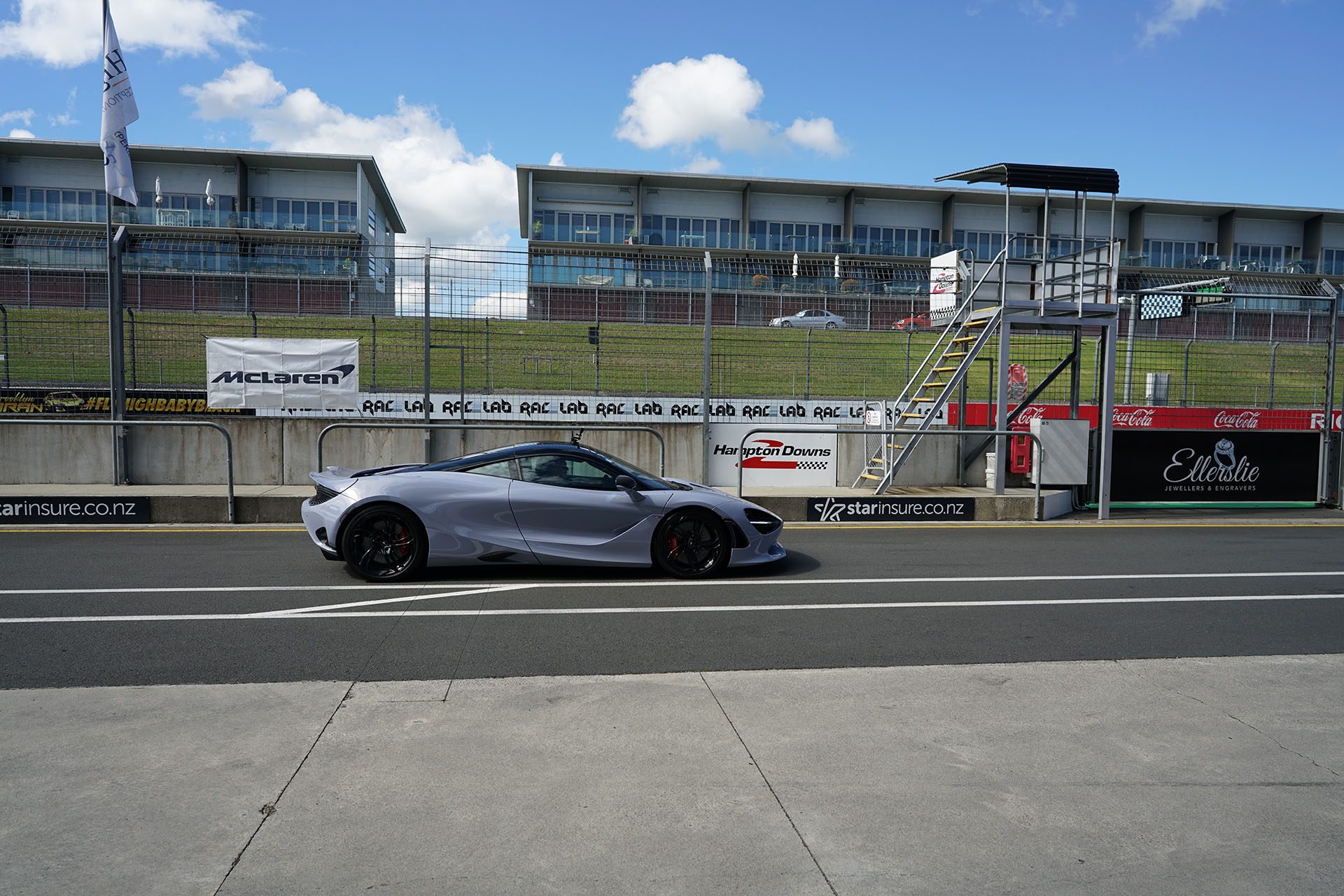Hampton Downs was the venue for the media drive of McLaren’s half-million dollar supercar, the 750S. Think of the McLaren 750S as a significant evolution of its 720S predecessor. Also on hand was the McLaren Artura plug-in hybrid supercar, for comparison purposes.

Track days are made for cars like McLaren because their performance potential is such that even stretching their legs on road risks a hefty fine at best. However, both of these supercars have Comfort driving modes, would you believe, making them everyday drives, providing you’re nimble enough to hop in and out.
And being top-end performance icons, naturally they have Track settings where the adjustable suspension bones up and the powertrains go just a wee bit mental. However, they are also incredibly capable and forgiving, such are their crazy high limits.
The roster had us warming up with a few laps in the Artura. Fortunately it was dry all day. Trusting the media with a $420k plug-in hybrid and a $518k V8 assassin, both packing twin turbos, is a leap of faith. However, they’d roped in the services of the Downforce team, the experienced Stu Owers in the passenger seat a calming influence.

As it happened, it was the Artura we got more seat time in but we had enough in the 750S to at least get a feel of what it’s like to command an exotic with an insane power to weight ratio.
That’s one of many changes in the evolutionary uptick from the 720S to the 750S. The number refers to the PS tally, while there’s also 800Nm of torque on hand. And the kerb weight? McLaren reckons 1277kg without fluids. The power to weight figure is 587PS/tonne. Its weight is extraordinary given the 750S is hardly tiny, despite only having two seats. It’s 4569mm long and 1930mm wide. The height is an almost ridiculously grounded 1196mm. Supporting it all is a carbon fibre monocoque, suspension is by aluminium double wishbones with linked adaptive dampers, and brakes are colossal carbon ceramic discs, 390mm at the front slowed by six-piston calipers.
The 750S looks similar to its forebear, forbidding. The main identifying feature of the 750S is the central exhaust outlet. The wing is a bit bigger and there are minor body differences. It’s 30kg lighter thanks to myriad weight savings, while the power of the 4.0L biturbo V8 increases. That’s thanks to extra boost for the twin-scroll turbochargers, a new exhaust and pistons, and a remapped ECU. There’s a shorter final drive for even greater acceleration too (0-100 in a claimed 2.8sec, stunning for a rear driver). Proactive Chassis Control remains, tweaked for the 750S. The crosslinked adaptive damper system does away with antiroll bars. Front track is wider by 6mm, and spring rates reduce compared with the 720S.

Our opening stanza with the big dog proves a bit of a learning curve. First you’re faced with the dihedral doors and entry involves a small amount of physical origami. We’ve encountered worse though. Once in, it’s quite spacious, even with a helmet. Seat adjustment is a bit of a trick with a maze of button controls all hidden from view.

Push the go button and the V8 fires menacingly behind. Hit D in the centre console (the two other buttons are N and R), add gas, the dual-clutch transmission engages and you’re away. We select Comfort for both suspension and drive mode initially. Here it feels almost civilised but not controlling enough for track works so we quickly select Sport which feels markedly better, the exhaust note angrier. It sounds surprisingly sporty for something with twin turbos. Hydraulic steering is beautifully responsive, accurate, quick, tasty. And, oh my, the acceleration.
Up to Track setting and the suspension is almost a bit jumpy when you’re not going so quickly. Later on, up to speed, and the firmness simply translates as improved body control. Grip is sensational, with asymmetric Pirelli PZeros. And even just in warm-up mode this piles on the kays with seemingly minimal effort.

We are into the Artura next. Controls are much the same as in the 750S. We kick off in Sport mode so it doesn’t EV to the start line as some had. Evidently it will do around 30km thanks to its 7.5kWh battery but really that 70kW/225Nm motor is there to give the twin turbo V6 a third boost. Combined output is 500kW (680PS) and 720Nm. Dry weight is a claimed 1395kg.
After the 750 it doesn’t feel quite as quick initially but it almost is; we saw 200km/h at the end of the infield straight and the 750S was no quicker in my hands. Out of the sweeper and the Artura would hit 230 clicks by the pit straight entrance and eventually we saw 245km/h before the braking zone. Speeds were the same for the 750S.

Once the brakes warm up both cars have stellar retardation, aided by an air dam and mid-engine weight distribution. The 750S is a touch more stable under brakes with its slightly longer wheelbase. It sounds a bit more aggressive too, as you’d expect of a V8 versus a V6. But I’ve not encountered a V6 that sounds as inspiring as the Artura before. Perhaps that’s because it revs to over 8000rpm. As we became more accustomed to the Artura, we could push it a bit more, get onto the gas a little earlier and you can feel the rear starting to squirm under the power out of the turns. The wheel and indeed the whole car feels alive beneath you. It’s so palpable and so at home on track.

I doubt I will ever drive another ICE power car with quite the focus or speed the 750S has on track but hope to be proven wrong. If you can’t quite spring for this, the Artura is oh-so close on track, and you can run it in EV mode around town.



